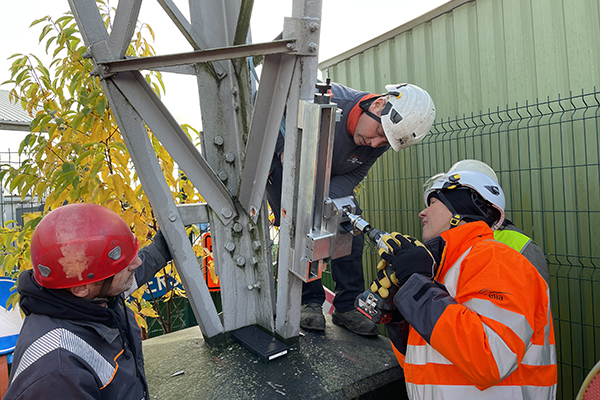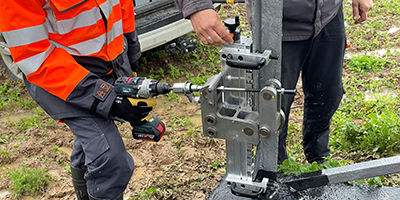23 April 2024
Pylon unbending
Advancing pylon repair methods: an efficient, economical, and safe solution for uninterrupted power supply
Context
This project presents a mechanical solution capable of exerting 12 tons of force to address repair pylon damage caused by agricultural machinery. It stands as a testament to the successful collaboration between our engineering team and the skilled researchers, engineers, and technicians from the OpenHub and the CREDEM technology platform at UCLouvain.
Why this project
Several times a year, pylons sustain damage from agricultural machinery, posing substantial risks to infrastructure safety and reliability. Conventional repair approaches are of high quality but laborious , time-intensive, and expensive, frequently leading to service interruptions. Our goal was to develop a compact, resilient apparatus capable of swiftly repairing pylon damage while minimizing disruptions.
Approach
Guided by design thinking principles, the project prioritized understanding the problem, empathizing with end-users, and generating innovative solutions. This iterative process allowed us to learn from setbacks and continuously improve our approach.
Results
The mechanical prototype underwent field testing, yielding results that exceeded expectations. Repairing two pylons damaged by agricultural machinery in a single day showcased the machine's efficiency. Field agents expressed satisfaction with its ease of use and the outcomes achieved. Additionally, the success of this endeavor is deemed crucial by the Asset Management department, as it paves the way for greater flexibility in other maintenance tasks.

Next steps
The forthcoming plans will be made accessible under an open license, empowering all Transmission System Operators (TSOs) to develop their own machinery and streamline pylon repairs. Additionally, in 2024, we will commence the industrialization phase of the tool.
Partners
UCLouvain played an indispensable role as our collaborator throughout this project, furnishing us with the requisite resources and expertise to realize our objectives. Their state-of-the-art facilities, including 3D printers, laser cutters and a fully equipped mechanical machine shop, facilitated the rapid prototyping process. Moreover, their mechanical engineers played a pivotal role in refining and optimizing our design, ensuring that the final machine possessed the capacity to generate the required 12 tons of force to reshape damaged pylon angles.
  |
  |



